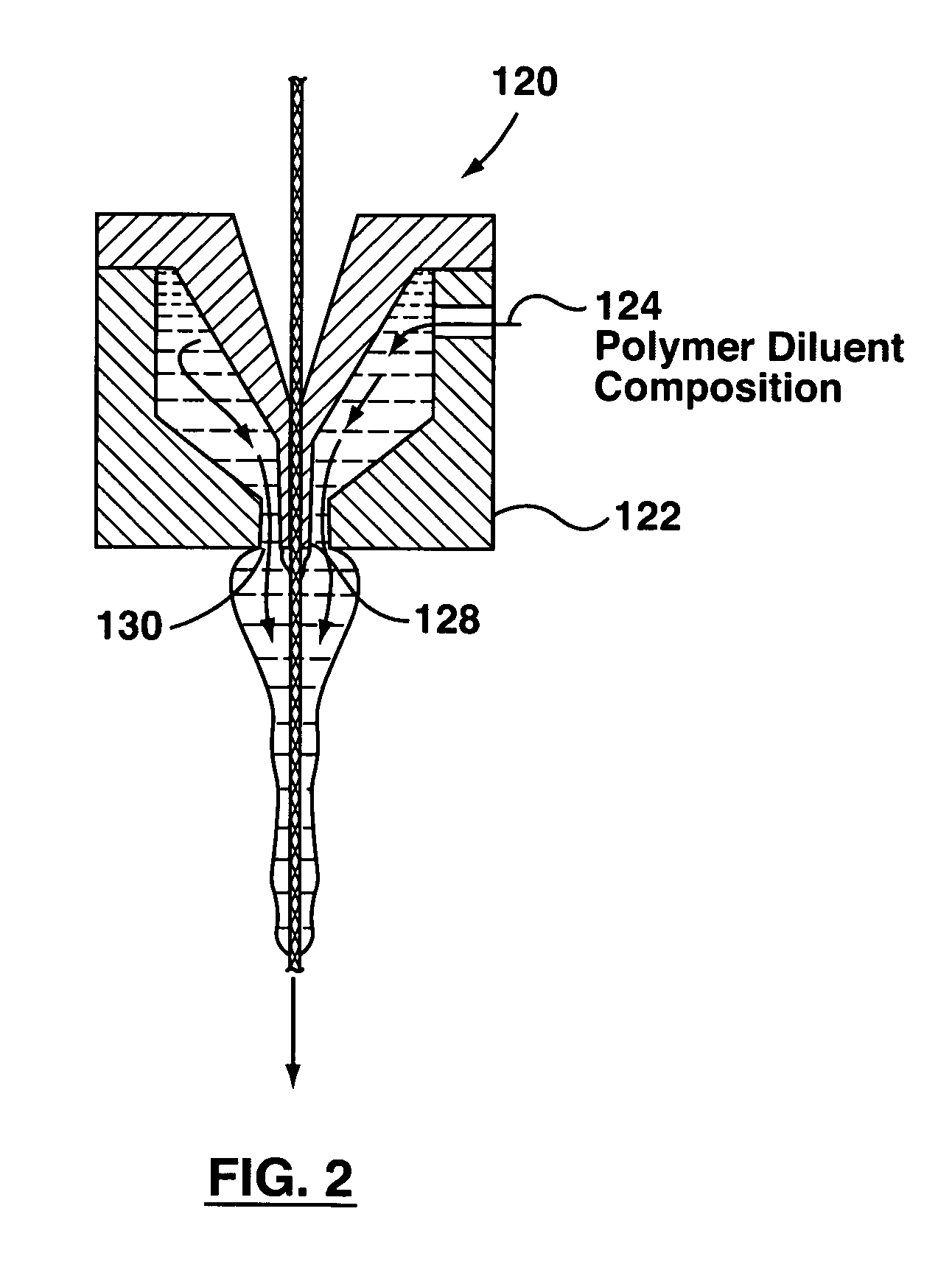System and method for synthesizing a polymeric membrane
a polymer membrane and polymer technology, applied in the field of membranes, can solve the problems of low tensile strength, inability to maintain tensile strength, and inability to meet the requirements of many applications, and achieve the effect of increasing the membrane permeability
- Summary
- Abstract
- Description
- Claims
- Application Information
AI Technical Summary
Benefits of technology
Problems solved by technology
Method used
Image
Examples
example 1
[0059] 25% by weight of ECBA terpolymer (XPM-2 produced by Solvay Solexis) and 75% by weight of a tri-isononyl trimellitate (Jayflex™, produced by Exxon Mobil Chemical ) are mixed in a reactor and heated up to 230° C .
[0060] By means of a hollow fiber apparatus such as shown in FIG. 2, the mixture obtained is extruded into a hollow fiber on the braid made of polyester synthetic fiber. The hollow fiber is quenched in water and is immersed in pure isopropyl alcohol at room temperature for 10 hours to extract the tri-isononyl trimellitate latent solvent. Next, the hollow fiber is washed in water for 1 hour. The porous membranes thus obtained have a three dimensional porous structure. Physical characteristics of the resultant membrane are listed in Table 1.
examples 2 to 5
[0061] A porous membrane of an ECBA terpolymer is obtained in the same way as in example 1 except that several different concentrations of the ECBA were used as follows:
(weight % of ECBA terpolymer)Example 2.30%Example 327%Example 420%Example 518%
[0062] Physical characteristics of the resultant porous membranes are listed in Table.1.
examples 6 to 7
[0063] A porous membrane of an ECBA terpolymer is obtained in the same way as in Example 1 except that several different quench temperature can be used as follows:
(quench temperature)Example 640° C.Example 780° C.
PUM
| Property | Measurement | Unit |
|---|---|---|
| melting point | aaaaa | aaaaa |
| boiling point | aaaaa | aaaaa |
| temperature | aaaaa | aaaaa |
Abstract
Description
Claims
Application Information
 Login to View More
Login to View More - R&D
- Intellectual Property
- Life Sciences
- Materials
- Tech Scout
- Unparalleled Data Quality
- Higher Quality Content
- 60% Fewer Hallucinations
Browse by: Latest US Patents, China's latest patents, Technical Efficacy Thesaurus, Application Domain, Technology Topic, Popular Technical Reports.
© 2025 PatSnap. All rights reserved.Legal|Privacy policy|Modern Slavery Act Transparency Statement|Sitemap|About US| Contact US: help@patsnap.com



